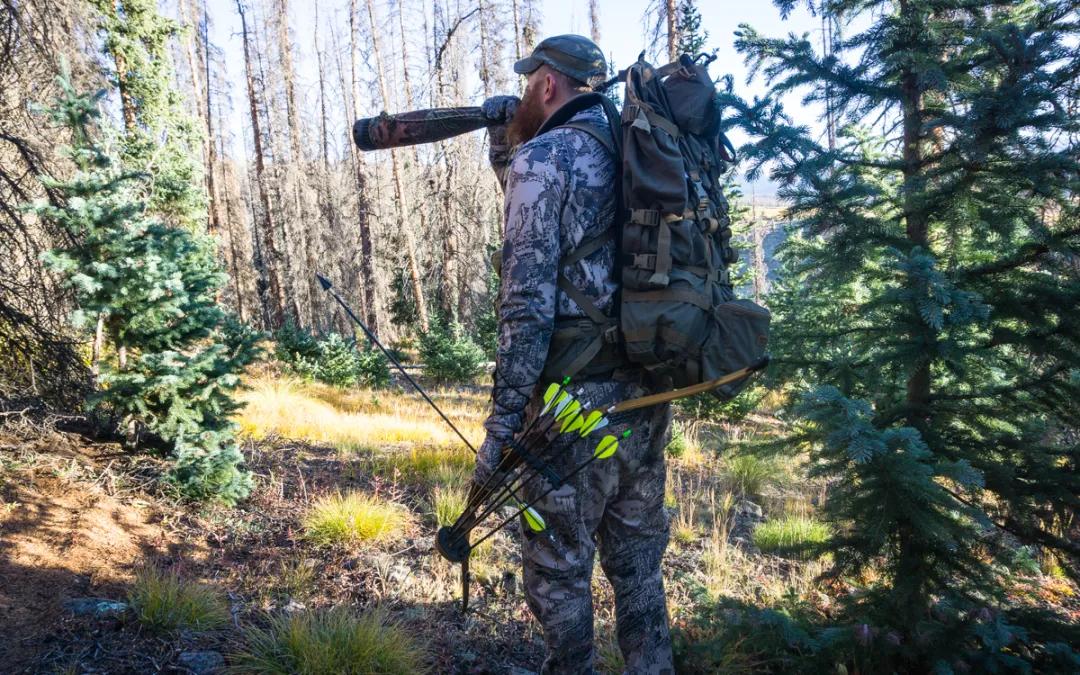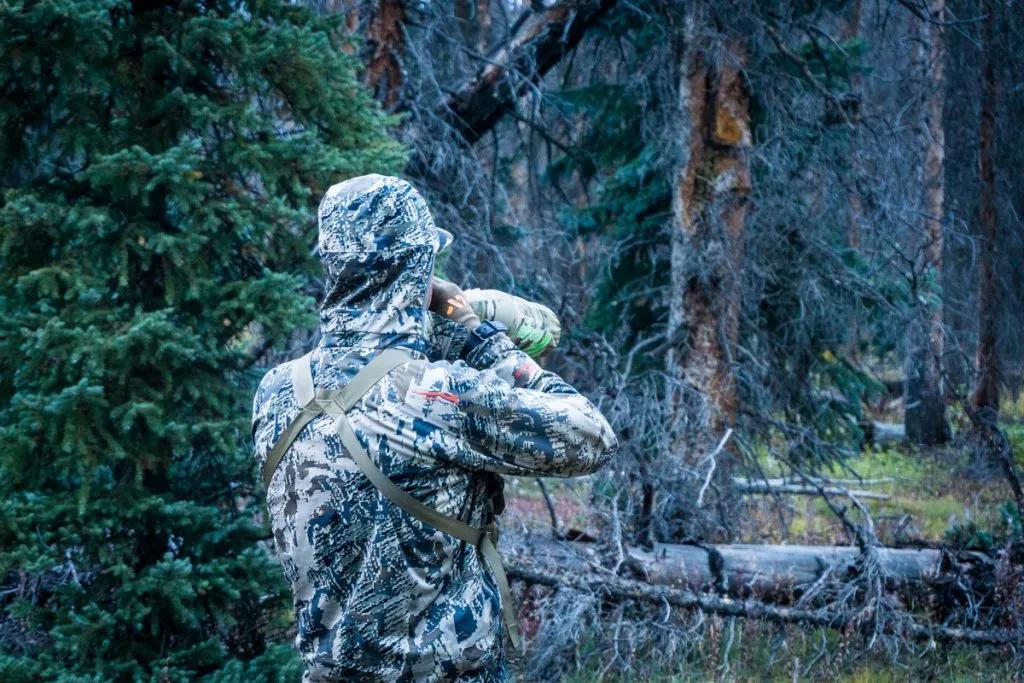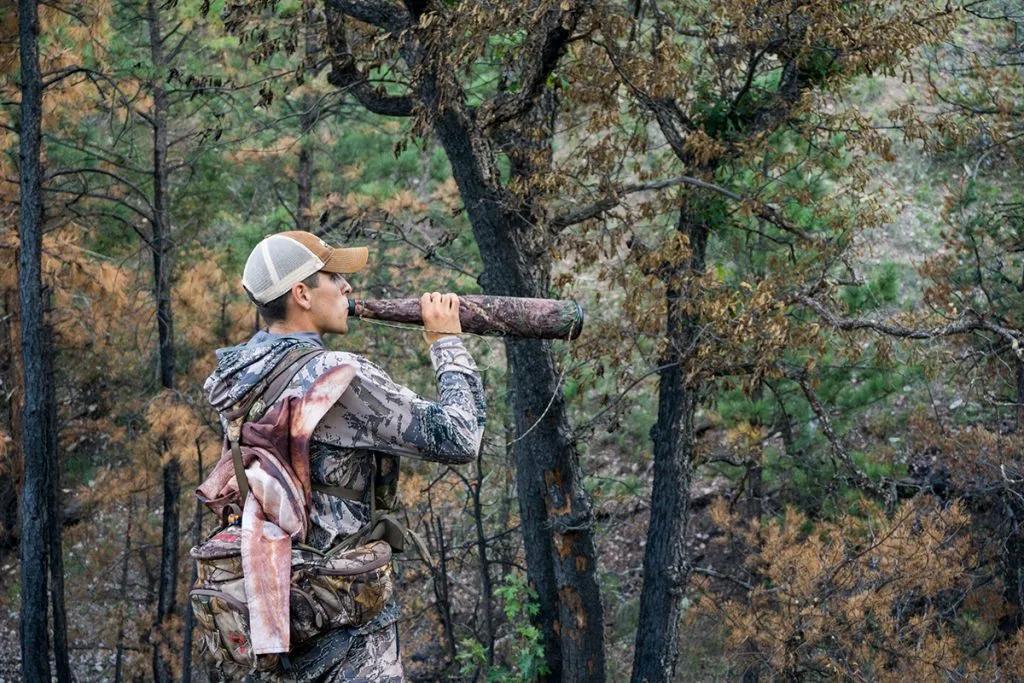Blog
Elk Calling Basics: 4 Fundamentals to Remember

Every so often, a big bull strolls right into your shooting lane and everything is perfect. While lucking into them is always nice, having a solid elk calling strategy only increase your odds of success. It’s one thing to get them talking. It’s another thing entirely to consistently be in the best possible positions for a shot without getting busted.
When it comes to consistently successful elk calling, here are 4 fundamentals to always remember:
Prioritize the Wind
In every setup, make the wind direction your first priority. Bulls are crafty and will often talk to you while circling to get the best wind advantage. The struggle to maintain the best wind positions is constant and should always be top of mind on elk hunts.
In many cases, that means thinking ahead. For example, in the early morning hours the thermals are usually moving downhill. But if you’re working a bull, don’t get tunnel vision and forget that as soon as the sun starts coming up, the playing field will change. Like a good chess match, a calling setup often means thinking several steps ahead.
Whenever you have an active bull or ideally, more than one, start with the wind then plan your setups accordingly. Having the scent advantage will only increase your odds of success.
For even more details on this topic, see our previous article on thermals and playing the wind.
Team Elk Calling Setups
Having a hunter and another caller or even two can make a huge difference for setups. This is a big advantage on our guided hunts. Team calling scenarios make it possible for the hunter to be in a position to intercept a bull that’s moving towards the caller.
The primary caller (in our case, the hunting guide) can use the landscape to draw bulls into range of the hunter. Look for hills and natural features that require the bull to cross your intercept point in order to reach the caller’s position. It’s important to create enough space so the bull can hear but can’t see the caller’s position when moving past the hunter.

Use the Downwind Arc
In many calling scenarios, bulls will try and circle the source of the calling to approach from the downwind side. Therefore, it’s often a good strategy to position the caller somewhere along that arc, rather than in a direct line between the bull and the caller.
Keep in mind of course that elk rarely read the script and do exactly what you expect. Therefore, pay attention to all the factors in front of you – including the landscape and the bull’s level of responsiveness. Ultimately, each setup requires some judgment calls. But especially when a bull is acting cautious, err toward positioning the caller closer to that downwind arc that the bull is likely to travel.
Be Prepared With Different Calling Strategies
Aggressive elk calling and challenging with a bugle or a bugle mixed with cow calls can bring in hot bulls. The caller can position to draw the bull past the hunter, keeping a cow call ready to stop the bull. Keeping the bull engaged and interested is the caller’s role here. Ideally the bull will cross the hunter’s path before the caller gets busted.
But sometimes, it may take a less aggressive approach to bring the bull into range. When a bull won’t move into range with bugle calling strategies, cow calls can pique curiosity and get him to move just close enough. Even if he doesn’t move entirely to the caller, it might be enough to give the hunter a shot.
In other situations, raking can be very effective to tempt a bull into range. There are many different ways and combinations of calls that can be used to entice a bull elk. Much like fishing or many other outdoor pursuits, it may be more art than science. It takes experimenting and experience to learn what elk want to hear and what’s going to fire them up.
That’s the fun and the frustrating thing about elk hunting – no two situations are the same. But we learn something every time. And with persistence, you can begin to read an elk’s behavior and his response to different calls. When you succeed and call an elk into range, there’s nothing in the world more exciting! You can also check out Phelps Game calls for elk diaphragm calls and bugle tubes.
Learn More About Our New Mexico Elk Hunts
To learn more about our guided elk hunts in New Mexico, take a few minutes to read the information on our Elk Hunting Page. If you’re ready to talk to us about a hunt, you can find our contact information here. We’d love to help you plan a memorable elk hunting adventure!

‹ Back



